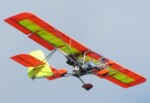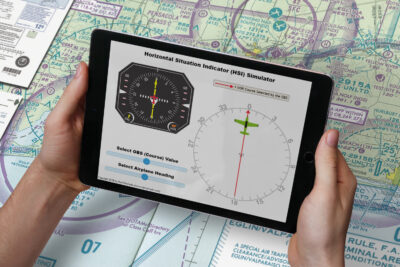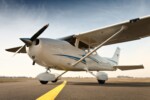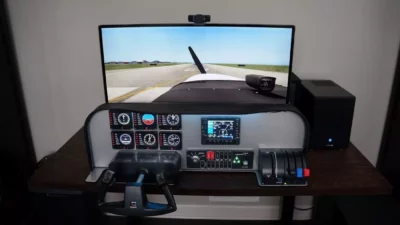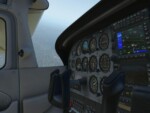The 9 Best Paper & Electronic Pilot Logbooks in 2024
6 July 2021 | Updated on February 05, 2024
A logbook is easily one of the most important tools for a pilot.
In the dynamic world of aviation, where precision and accuracy are paramount, every pilot understands the significance of maintaining a meticulous record of their flying experiences. The pilot logbook serves as a tangible testament to their journey through the skies, capturing flight hours, aircraft types, destinations, and other vital details. As we embrace the digital age, pilot logbooks have evolved from traditional paper versions to sophisticated electronic alternatives.
In this article, we will delve into the importance of logbooks for pilots, explore the best options available in both paper and electronic formats, and provide valuable insights for new (pilots) considering the purchase of a new pilot logbook in 2024.


The Best Paper Pilot Logbooks for Student Pilots
Even as we navigate through an age saturated with digital innovations, the appeal of paper logbooks remains undiminished for a significant number of aviators. The tactile experience of turning pages, each brimming with handwritten notes and memories, evokes a unique sentiment. Every scribble, every notation, tells a story—of challenges faced, lessons learned, and milestones achieved.
These logbooks are more than just records; they are tangible pieces of a pilot’s journey, connecting them to the rich tapestry of aviation’s storied past. The act of manually logging each flight serves as a rite of passage, a nod to the generations of pilots who charted their courses before the advent of digital tools. For many, paper logbooks are not just about tradition; they symbolize a deeply personal bond with the art of flying, offering a sense of continuity in an ever-evolving landscape.
Below are a few great paper logbook options you can’t go wrong with!
1. The Standard Pilot Log
$13.10 $14.95
Renowned for their exceptional quality and adaptability, The Standard logbooks have been pillars in the aviation community for over six decades. Meeting the FAA’s documentation standards, these logbooks cater to every aviator’s needs, from students to ATP professionals.
Dimensions: 9″ x 5.5″
Total Pages: 110
2. Jeppesen Pilot Logbook
$18.85
Designed for lasting performance and optimal functionality, the Jeppesen Pilot Logbook stands as a benchmark in the industry. Its spacious flight-time sections, aligned with FAA standards, accommodate up to 520 flight records. The logbook’s green-tinted pages are gentle on the eyes and prevent ink seepage. It’s encased in a cover that’s resilient to wear and tear.
Dimensions: 8″ x 5 1/4″
3. Peter Beilenson Pilot Log Book
$7.99 $8.99
Elegantly crafted and built to last, the Peter Beilenson Pilot Logbook adheres to FAA guidelines. It thoughtfully provides sections to note down certificates, ratings, medical histories, flight proficiency records, endorsements, and beyond. The aviator-green pages not only minimize glare but also stand strong against ink bleed-through.
Dimensions: 8” x 4-1/2”
Total Pages: 96
4. The Standard Pilot Master Log
$23.55 $29.95
Designed to meet global standards, ASA’s popular logbook aligns not only with FAA regulations but also adheres to ICAO, JAA, CAA, and CASA guidelines, inclusive of JAR-CFL 1.080.
Its columns are standardized for ease, yet offer the flexibility for pilots to tailor them as needed. Additionally, summary sections provide a quick overview, allowing pilots to easily track their experience, aircraft familiarity, medical dates, flight reviews, and more.
Dimensions: 11″ x 6-1/2″
Total Pages: 288
The Best Electronic Logbook (Apps) for Student Pilots
In the midst of a tech-driven aviation transformation, electronic logbooks have risen as a favored choice over traditional paper ones. These digital platforms boast features like instant data syncing, automatic computations, and easy access on various devices. With just a couple of clicks or taps, pilots can effortlessly view and organize their flight details.
A standout feature of these electronic logbooks is their capability to instantly sync data across diverse devices. Whether you’re using a smartphone, tablet, or desktop, updating your flight records becomes a breeze. This is especially handy for pilots who find themselves in different cockpits or various locations, removing the need to tediously copy data by hand.
Additionally, many of these digital logbooks come with the added benefit of automated calculations. This means fewer chances of making mistakes when tallying flight durations, ensuring flight currency, or monitoring other vital statistics. Such automation not only streamlines the logging process but also offers a clearer view of a pilot’s flight trajectory, aiding in adherence to aviation standards.
Here are some top picks in the realm of electronic logbooks for your consideration.
1. Logbook.aero
Logbook.aero stands out as a versatile electronic pilot logbook, accessible across IOS, Android, and its dedicated website.
We personally vouch for and use Logbook.aero! Packed with an array of features such as PDF exports, comprehensive reports, digital signatures, precise time calculations, seamless import/export capabilities, and license tracking, it offers immense value. All these premium features come at an impressively affordable rate of $5/month or an annual fee of $50.
For those keen to explore its offerings, Logbook.aero provides a 14-day free trial to get you started.


2. ForeFlight logbook
ForeFlight, a leading flight navigation software, seamlessly incorporates a logbook feature within its app. This integration allows pilots to effortlessly log flights, monitor hours, check currency, document certificates and ratings, obtain electronic endorsements from instructors, and produce detailed experience reports.
To leverage these functionalities, it’s essential to note that an active ForeFlight subscription is required, as the logbook isn’t offered as a separate standalone app.


3. LogTen Pro
LogTen Pro stands out as a top-tier electronic logbook app with a longstanding reputation. Users can tailor their logbook using renowned formats like ASA or Jepps or opt for custom settings. However, it’s exclusive to Apple devices.
Subscriptions vary based on device combinations: iPhone + iPad, Mac, or a comprehensive iPhone + iPad + Mac package. Businesses have a dedicated license option. Notably, student pilots (up to 250h total time) can benefit from a free, albeit feature-limited, subscription.


4. FLYLOG.io
FLYLOG.io offers a unique blend of electronic logbook functionality coupled with VFR navigation and mapping features. Positioned as an affordable alternative to Foreflight’s integrated logbook, it delivers value without compromising on features.
Users can opt for the logbook-only subscription at a modest $.49/month or choose the comprehensive bundle, including VFR navigation, priced at $7.99/month.
Things to Consider When Buying a Logbook as a Student Pilot
Choosing the right logbook as a student pilot is a crucial step in your aviation journey. It’s not just about recording flight hours; it’s about having a reliable tool that aligns with your needs and goals. Here are some key factors to consider when making your selection:
- Format (Paper vs. Electronic): Decide whether you prefer the traditional feel of a paper logbook or the convenience of a digital one. While paper logbooks offer a tangible connection to your flying experiences, electronic versions provide easy data synchronization and automated calculations.
- Ease of Use: Especially for those leaning towards electronic logbooks, the user interface should be intuitive. You don’t want to spend excessive time figuring out how to log your hours or search for specific entries.
- Data Entry Fields: Ensure the logbook has all the necessary fields you need to log, such as aircraft type, flight duration, conditions, and remarks. Some logbooks might also offer sections for endorsements or flight reviews.
- Durability: If you’re opting for a paper logbook, it should be sturdy and durable. Remember, this book will accompany you throughout your training and possibly beyond, so it should withstand wear and tear.
- Cost: While you shouldn’t skimp on quality, it’s essential to find a logbook that offers good value for money. Some electronic logbooks might come with subscription fees, so factor those into your budget.
- Backup and Storage: For electronic logbooks, ensure there’s a reliable backup system in place. Losing your flight records can be devastating, so it’s crucial to choose a platform that regularly backs up your data.
- Regulatory Compliance: Ensure the logbook meets the standards set by your country’s aviation authority. This is vital for when you’re applying for licenses or ratings.
- Reviews and Recommendations: Before making a purchase, check out reviews from other student pilots or ask your flight instructor for recommendations. Their insights can be invaluable in guiding your decision.
- Expandability: Think about the future. If you’re considering a career in aviation, you might want a logbook that can accommodate many entries or one that can seamlessly transition to a professional format.
- Customization: Some electronic logbooks allow for customization, letting you add specific fields or tailor the interface to your liking. For example, we often do a lot of ‘special flying’ like sailplane towing, etc. Logbook.aero allows me to add additional columns to keep track of my sailplane towing hours.
By keeping these considerations in mind, you’ll be better equipped to choose a logbook that not only serves its primary purpose but also enhances your flight training experience.
Pilot Logbook Tips for Student Pilots
Navigating the world of pilot logbooks can be a bit daunting, especially for newcomers to the aviation field. Beyond just selecting the right logbook, there are several practices and habits that can make your logging experience smoother and more efficient.
In another article, we have listed some helpful tips for efficient and and accurate logging of your (training) flights, you can read it here:





